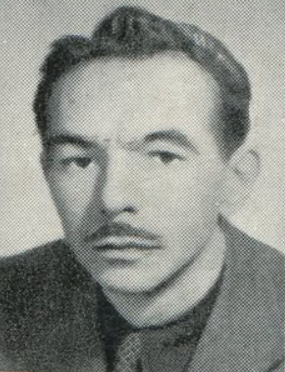Edited by Don Malcolm on 1/4/2022, 8:54 am
There are fewer of these now: perhaps because so many films use such similar plot and character devices, we have a different "remake" situation from what was the case 15-20 years ago. (That's a subject for another thread.) When a bonafide remake comes along like Guillermo del Toro's NIGHTMARE ALLEY, however, we need to take notice of what the director's intentions are in relation to the level of achievement that's been established for the original.
The stated intention of del Toro and his screenwriting partner Kim Morgan (now his wife, BTW...) was to be more faithful to the original source material than had been the case in 1947, when the first version of NIGHTMARE ALLEY was filmed. The question of whether "being more faithful" also permits various forms of artistic license with the characters and plots is a slippery one to navigate, and it's compounded by such a statement of intent. Regardless of the skills displayed in production design, lighting, editing and various other forms of "mise-en-scene," filmmakers/screenwriters who plainly state an intention to "be more faithful" need to make good their word. Actors work with what they are given by the director (who shapes how the screenwriter's dialogue and description of action and visual elements will exist on screen) and they can only take their characters where the words and actions guide them to go. If the characters do not embody the intentions of the original author, then the screenwriter and director who've pledged to be "more faithful" have failed to keep their word.

Guillermo del Toro & Kim Morgan
And that's what happens in del Toro and Morgan's version of NIGHTMARE ALLEY. A (re-)reading of William Lindsay Gresham's 1946 novel makes that abundantly clear, and it coarsens and undercuts what otherwise is a cold but masterful on-screen realization.

First, Stan is not a vicious killer in the novel; nor was he in the 1947 film. He is not truly an "Oedipal character," even though the novel does delve into his childhood, depicting his father as a cold, forbidding man who drove his wife into the arms of another man. Stan finds him hateful, but that hatred is tempered by the fact that his mother abandoned him when she ran off--the question of an ostensible sexual attraction to his mother is abrogated by this occurrence. Morgan and del Toro seem to recognize this, but their response as they search for a psychological "hook" is to create scenes of Stan killing his father in order to "double down" on an ersatz form of "Oedipalism" which is awkwardly mirrored by del Toro's macabre "pickled evil baby" that appears in the carnival's "hall of horrors" and that is apparently supposed to serve as a way into Stan's repressed childhood memories.
"Oedipalism" was rejected by Jules Furthman, the screenwriter of the 1947 film, for two reasons: first, it wasn't developed as a way into Stan's true character, but as a state of mind that Dr. Lilith Ritter could use to manipulate him in the event that their "ultimate con" of industrialist Ezra Grindle went sour. Furthman retained the language of Oedipalism in the climactic scene in Ritter's office because it showed how easily she could twist a dynamic and chaotic situation to her advantage, proving that she was much more cunning and ruthless than "the Great Stanton" (the charlatan mind-reader). Second, all of that childhood backstory would have added 10-15 minutes to a film that was already going to be pushing two hours (the original NIGHTMARE ALLEY ran 111 minutes).

Jules Furthman
The extra scenes add violence and fill the screen with a fiery blaze--the standard "hellish" introduction to an evil, fallen world. They do not reflect the character of Stan Carlisle as portrayed in the novel, however. In the book, the memories surface as a motivation for Stan to escape the carnival, which is too literally reminiscent of world's dark side, but they are not Oedipal in nature. They create in him an intense desire to soar above the muck of mankind, via the power of mind. The closing lines in the 1947 version, spoken by Roy Roberts, remind us that the proper Greek myth model for Stan is Icarus, the boy who flew too close to the sun.
Similarly, Stan doesn't kill anyone in Gresham's novel. His doubts (and some latent sense of guilt for causing a rift in his parents' marriage) lead him to question if he gave the fatal bottle of wood alcohol to fading carny Pete as a way to expedite his access to "the code" that could ignite a mind-reading act by which he could escape the carnival, but this is just another way for Lilith to control him later on (a neat trick of writing by Gresham: as Stan researches the details of Grindle's guilt, Lilith is doing the same thing to Stan). The 1947 version makes it clear that Stan (Tyrone Power) gave Pete (Ian Keith) the wrong bottle--the "poison booze" was stored in the same trunk he'd stashed his bottle of hooch: he grabs it by mistake and hands it to Pete unknowingly. The 2021 version makes it murkier by putting many bottles of both types adjacent to one another in carnival owner Clem Hoatley's "lair"--consequently, it's harder to tell what Stan is actually up to.
Second, Lilith Ritter is exaggerated beyond proportion in the 2021 version to resemble a standard film noir femme fatale, beginning with the gun in her purse when she challenges Stan during his mind-reading performance once he and Molly are an established act "fleecing the swells." As it turns out, Morgan and del Toro have amplified action from the 1947 version, which itself took license with the way Stan actually meets Lilith (Stan "belittling" Lilith never occurs in the book at all--he contacts her because his underlying anxieties about his charlatanism are affecting his mental equilibrium; in another Greshamseque irony, the psychiatrist Stan picks is several orders of magnitude more unscrupulous and cunning than he is).

William Lindsay Gresham
So: no gun, and no shooting of Stan in the climactic scene in Lilith's office. This is all escalation of violence that del Toro and Morgan evidently felt was needed to jack up a period tale into something more au courant for 2021 audiences. (The irony here is that they "double-crossed the t" by reintroducing the gun in the climactic scene because they decided to add the gun to a scene that they lifted from the 1947 version and NOT from the source novel.)
None of the above is meant to belittle the performances of Bradley Cooper and Cate Blanchett: they are playing what was provided to them in the script and from the director's interpretation of the character. What del Toro and Morgan (and others) don't seem to grasp, however, is that NIGHTMARE ALLEY was a most unusual film noir in the context of what appeared in the late 1940s, and that the archetypes and specific models that they attempted to superimpose into their version of the story are not a good fit for the characters, and strip them of their individuality and uniqueness within the pantheon of classic film noir personages. Whatever Furthman left out of the 1947 version (and there were more excisions: but this post is long enough already), he retained the essential nature of the characters as he found them in Gresham's book. That's not quite the case for Morgan and del Toro.
Finally: the ending of the film, which many reviewers have rhapsodized about. This didn't happen in the novel, which ends with the offer of a "temporary job" as the geek: we never hear Stan say he "was made for it" (or "born for it", as del Toro and Morgan alter it). That's another Furthman invention, suitably macabre even without the reappearance (as in the 2021 version) of the "pickled devil baby" that del Toro apparently cannot resist. As is also the case with another famous noir "rotter" (Harry Fabian in NIGHT AND THE CITY), some folks are seemingly impressed by his very belated realization that he's been on the road to hell for some time and was too busy being a con man to notice that he has a (metaphorical) picture in the closet. Others find it impossibly belated and unconvincing, despite the efforts of Cooper (and Richard Widmark) to convey some brief flash of emotional recognition of their own "rotter-dom." The 1947 version gets dissed for a "sentimental" ending, but Darryl Zanuck was correct to note that we need to retain some small amount of sympathy for Stan, via the "there but for the grace of God go I" trope (much harder to apply to Harry Fabian, though Widmark gives it the old college try...) and the way to do it is to show Stan at his most inarticulate, a literal shell reached out to by a pitying ex-wife mouthing words of comfort meant mostly to keep him from creating mayhem. If Molly means what she says, then she's consigning herself to the fate that Zeena (Joan Blondell) had been bound to with Pete--taking care of a fallen one who'd flown too high and crashed catastrophically to earth. All of which neatly ties together the "wheel of fortune," fate as a cycle, the Tarot motif and the Icarus myth into a cautionary tale about hubris (and not the Oedipus complex).
The 2021 version of NIGHTMARE ALLEY is highly accomplished, but critics who suggest that something is hollowed out in it are probably onto something. That may be why the "little folk" who post reviews at IMDB have not flocked to it with "10" ratings in the way that is often customary for "cult directors" like Quentin Tarantino (and who also incur a great deal of backlash, as manifested in the number of reviewers who pan it with a "1" rating). One winds up appreciating del Toro's talent while not embracing the results he produces. That--and the unfortunate timing of the film's release--seems to be leaving it in its own briny jar like del Toro's overused "pickled devil baby."

Responses
 on 12/27/2021, 7:13 pm, in reply to "
on 12/27/2021, 7:13 pm, in reply to "